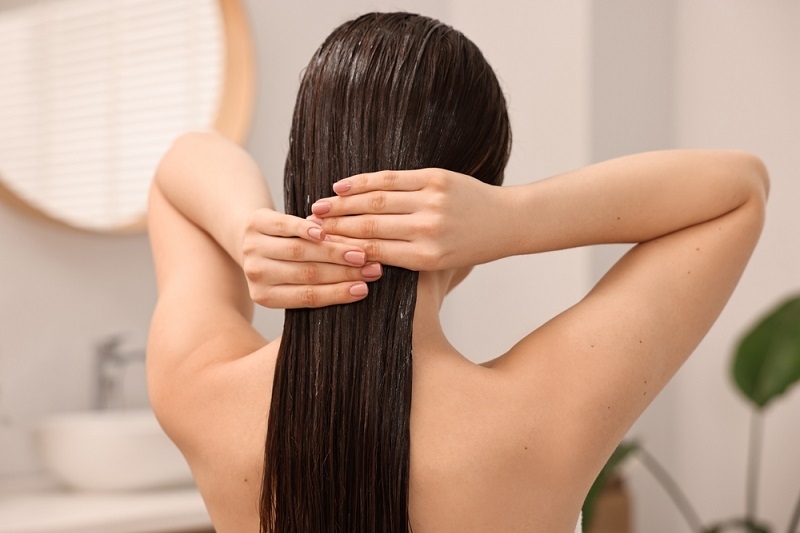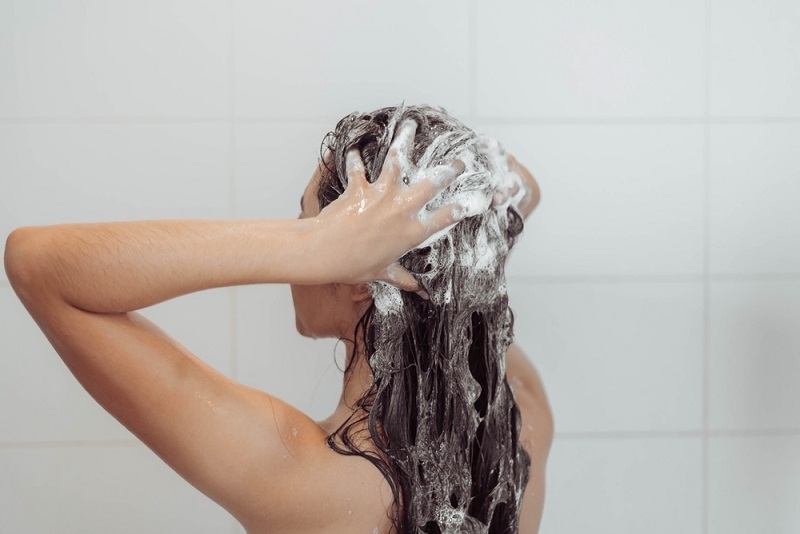
Healthy, shiny hair is a beauty goal and a sign that you've properly cared for your scalp and hair. Whether you're dealing with dryness, frizz, and/or breakage or want to make your hair look better, incorporating the proper routine for your desired hair will help improve its strength and health.
This guide provides everything you need, from which shampoo is best for hair growth to natural hair care techniques. It is your guide to achieving nourished, beautiful hair that is bound to get you noticed.
Hair care can sometimes be confused with irregular treatments or shiny new products. However, there is no way to make a lasting impact on your hair without consistency! A consistent hair care routine for healthy hair will ensure a healthy scalp and strong strands and improve overall hair texture over time.
Many variables can negatively impact your hair: pollution, chlorine (in water), heat exposure, chemical treatments, and diet. A hair care routine can help you combat these stressors and allow your scalp to maintain its natural growth cycles.
Before you begin your daily hair routines, first, know your hair and scalp type:
Why is this important? A dry scalp needs moisture, whereas an oily scalp might need detox shampoo. Thin hair may want volume ingredients, but coarse hair will want to keep it hydrated!
Knowing your type will help you find the best shampoo for hair growth and conditioners or masks that fit your needs.
A proper cleansing routine is essential to promote hair that is strong and resilient.
An excellent shampoo for hair growth will do more than just clean hair; it will also help with the health of the follicles and circulation at your scalp, so use a corresponding conditioner for maximum moisture retention with less tangling.
The frequency with which you wash your hair will depend on your hair type; however, most people wash their hair 2-3 times a week.
Your hair experiences a lot—heat tools, the sun, and air pollution. Deep conditioning once a week delivers intense hydration and protection.
Choose a product with shea butter, argan oil, or keratin. Or try DIY masks from your natural hair care guide:
Apply after shampooing, wrap your hair in a warm towel, and leave it on for 20–30 minutes.
A proper hair care routine for healthy hair doesn’t stop in the shower. Post-wash care matters too.
These products protect hair throughout the day, boost hydration, and provide a glossy finish, making them essential shiny hair hacks.
Heat tools like blow dryers, flat irons, and curling wands can weaken hair shafts over time. To maintain strength:
If you love styling, consider non-heat methods like braiding damp hair or using foam rollers to add texture and volume naturally.
It sounds basic, but how you brush your hair affects its health.
Regular trims, which occur every 6 to 8 weeks, prevent split ends from traveling up the hair shaft. Think of them as a reset for your strands.
No hair nourishment tips list is complete without mentioning nutrition. Your diet plays a vital role in hair growth and strength.
Also, stay hydrated—water helps keep hair supple and prevents dryness.
Believe it or not, your pillowcase could be damaging your hair. Cotton can cause friction and lead to breakage.
Quality sleep also supports hormone balance, which directly affects hair growth.
A typical hair mistake? Using too many products. Layering too much can clog the scalp, damage hair, and reduce shine.
Less is more. Please follow your natural hair care guide to keep it simple, clean, and effective.

For consistency and balance, try this sample hair care routine:
This weekly plan combines daily hair care tips with shiny hair hacks and nourishment habits that ensure your hair stays vibrant without overdoing it.
Hair grows about half an inch per month on average. Visible improvements in strength and texture take time—usually 6 to 12 weeks of consistent care. Stay committed, listen to your hair’s needs, and adjust your routine as the seasons or your lifestyle changes.
Beautiful, strong, and healthy hair is always worth the wait.
The absolute best haircare routine to ensure strong, healthy hair isn't about finding the miracle product—it's about creating gentle, sustainable habits that support scalp health, nourish your strands, and minimize and/or prevent long-term damage.
With natural hair care, thoughtful product usage, innovative styling, and a nutrient-dense diet, you will transform your hair and confidence.
Shine with your hair from the inside out.
This content was created by AI